Mazda CX-5 2021: Akera (awd)
| Engine Type | Inline 4, 2.5L |
|---|---|
| Fuel Type | Unleaded Petrol |
| Fuel Efficiency | 7.5L/100km (combined) |
| Seating | 5 |
| Price From | $34,320 - $40,810 |
| Safety Rating |
|
Part 1: May 2021
Mazda's CX-5 was once the default choice for Australian buyers looking for an SUV, reigning as the top family car for 10 years since its debut in 2012.
In 2020 though, Toyota's RAV4 knocked the CX-5 from that perch, but Mazda isn't going to go down without a fight.
To keep the spotlight on its mid-size SUV, Mazda has updated the range with more equipment, reshuffled pricing and a sporty new variant, but does the CX-5 still have enough to compete?
.jpg)
To find out, we've snagged the keys to the top-spec Akera, with the 2.5-litre turbo-petrol engine, for six months to see if, in 2021, the Mazda CX-5 is still an attractive package for small families.
Priced at $51,880, before on-road costs, the Mazda CX-5 Akera is certainly pricey for some, but the Japanese brand has loaded this variant to the hilt with equipment to justify its cost.
As standard, the CX-5 Akera is fitted with a glass sunroof, powered tailgate, keyless entry, push-button start, dual-zone climate control, heated and cooled front seats, heated rear outboard seats and Nappa leather seat trim.
.jpg)
A nice feature for families is the inclusion of second-row air vents, which can be used to keep precious little ones comfortable on cold or hot days.
On multimedia duty is a 10.25-inch screen, which is larger than the 8.0-inch unit found in lower grades, with features including a premium 10-speaker Bose sound system, satellite navigation, Bluetooth connectivity and digital radio.
But the larger screen is not touch enabled, meaning all inputs are done through the console-mounted rotary control knob.
.jpg)
While the list of features is comprehensive, it's the smaller things that add up to really elevate the CX-5 Akera, such as a frameless and auto-dimming rear-view mirror, heated steering wheel, bright and clear head-up display, and the wonderful 7.0-inch digital driver's display that is customisable.
One notable omission is the lack of a wireless smartphone charger, though this isn't really an issue for me, as we prefer to plug in to use Android Auto anyway.
So extensive is the CX-5 Akera's equipment list, that premium paint ($495) is the only option available.
.jpg)
Our test car is finished in Mazda's signature 'Soul Red Crystal', which incurs the added cost, but other premium options include 'Machine Grey' and 'Polymetal Grey', whereas 'Jet Black', 'Deep Crystal Blue', 'Eternal Blue', 'Titanium Flash', 'Sonic Silver' and 'Snowflake White Pearl' are all standard.
Safety is also key to the CX-5 Akera's appeal, with active (crash avoidance) tech including, lane-departure warning, lane-keep assist, a reversing camera, rear parking sensors, night-time autonomous emergency braking (AEB) with pedestrian detection, automatic high beams, rain-sensing wipers and auto headlights.
What's especially awesome is these safety features are standard across the CX-5 range, with the Akera also gaining front parking sensors and traffic sign recognition. And the surround-view monitor makes it a breeze to nail that parallel park without curbing the nice-looking 19-inch wheels.
.jpg)
Powering our CX-5 Akera test car is a 2.5-litre turbo-petrol, four-cylinder engine, outputting 170kW at 5000rpm and 420Nm from 2000rpm. Paired to the engine is a six-speed torque converter automatic transmission, which drives all four wheels.
It's a punchy powertrain, no doubt, and is in fact one of the most potent engines available in the mainstream mid-size SUV segment, behind only the 183kW/387Nm Ford Escape.
According to Mazda's official figures, the CX-5 Akera AWD will accelerate from 0-100km/h in just 7.7 seconds, making it about as quick as a 1.5-litre MX-5.
.jpg)
The official, combined cycle fuel consumption figure is pegged at 8.2 litres per 100km, but in the coming months we look forward to testing this claim, and determining whether you need such a potent powertrain in a family SUV.
First impressions of the CX-5 are good though, and it's sizeable packaging means its easy to fit in a rear-facing child seat in the second row, as well as a full-size pram in the boot.
We will point out however, that installing a rear-facing car seat doesn't leave a lot of room for front passengers, but we'll dive more into the practicality side of things in our next review.
The powered tailgate really comes in handy here, too, as a press of the key fob will flick the boot open ready to load up with all our baby paraphernalia.
Mazda quotes a cargo capacity of 442 litres (VDA) with all seats in place, and 1342L with the second-row folded, but its tough to fit anything sizeable in the boot with a pram in place. And the lack of bag hooks in the boot means your groceries could easily spill out on the trip home from the supermarket.
Our fuel economy of 11.4 litres per 100km after a month is also significantly higher than the official claim, but we've only taken the CX-5 on short trips so far, so let's give it a few more months to settle in and see if that figure drops.
After a month in the garage, the reasons why the CX-5 is so popular are clear. It offers plenty of usable space and a long list of equipment, but in further instalments (and after more time with the car), we'll dive deeper into cost of ownership, real-world fuel economy, styling, and more, to see if this Mazda SUV should reign supreme.
Acquired: April 2021
Distance travelled this month: 431km
Odometer: 467km
Average fuel consumption for April: 11.4L/100km (measured at the pump)
Part 2: June 2021
It’s 2021, and it sucks that we have still have to deal with the occasional lockdown here and there.
Melbourne has probably been hit the hardest, and June saw another two weeks of face-masks, no visitors and only a handful of reasons to leave the home.

So, I guess it’s the perfect time for me to dive a bit deeper, and prod a little harder, into the Mazda CX-5’s practicality and features while it only gets the occasional run to the supermarket.
As a family hauler, the CX-5 should have enough room to cart around bags, prams, sporting equipment and more, and while there is space for those items, the boot does feel a little cramped.
Officially, the Mazda CX-5 will swallow 442 litres of volume with all seats in place, which is smaller than the 542L of the Toyota RAV4, the 539L of the Hyundai Tucson, and the 556L of the Ford Escape.
And you really can feel this difference in person.

As you can see in our pictures, three suitcases will get in there comfortably, but it doesn’t leave a whole lot of room for much else.
The boot length (from the second-row back-rests to the edge) feels especially short, but you can fit a full-sized pram – though only just.
The boot also feels narrow thanks to intrusive wheel wells, and even though Mazda has carved out two extra cavities near the bootlid for smaller items, it can still be a struggle to stow wider items like golfclubs.

However, the biggest sin of the CX-5’s boot might actually be the easiest to fix for Mazda, and that is the lack of shopping bag hooks.
Most cars these days will offer up one or two hooks to loop your grocery bag over and stop the contents spilling out when on the move, and some of them (like the fold-out ones found in Skoda models) are genuinely great.
Positioned as a family hauler, you’d think the CX-5 would feature at least a few of these hooks given how often parents are in and out of supermarkets for milk, bread, nappies and more, but I’ve searched high and low to no avail.
I’ve had many an apple and/or bottle of kombucha roll out of our bags in our two months with the CX-5 already, and I’ve since resorted to putting our groceries into the front passenger footwell and seat.
Look, it might seem like the boot’s shortcomings make the CX-5 unsuitable for family duties, but if you are like us and have just one young baby – or even a few small kids – you’ll be able to make the space work.
If you had twins or like to travel with lots of gear on the other hand, well, you’d probably be better off with something a bit bigger like the seven-seat CX-8 (with the third-row stowed for maximum boot storage potential) or any number of other rivals.
But enough about the boot, how’s the second row?

In the rear seats, there is ample room for passengers in the outboard positions, though the middle seat suffers of an instrusive transmission tunnel and narrow base.
Leg, head, and shoulder-room are ample, even for my six-foot-tall frame, so children and smaller adults should have no problem spending some time in the second-row of the CX-5.
A rear-facing baby seat can easily fit, though, and there is sufficient space to make installation a breeze with the Isofix points and top-tether anchors easily accessible.
However, a rear-facing baby seat does seriously impinge on front passenger room, but more on that in a bit.
In the second row, amenities include air vents, a fold-down armrest with cupholders and back-seat map pockets, but no charging outlet to keep device-addicted kids happy on long road trips.

It is a pleasant enough space to be, but the narrow windows and slim glasshouse do make it a little dark and claustrophobic at times, especially during Melbourne’s dreary winter months.
What does lighten up the mood in the rear seats is the top-quality materials used throughout, with leather on the seats, and soft-touch surfaces on the armrest and door trim.
We all know Mazda does a great cockpit, but its fantastic to see that level of care and attention to detail also extend to the second row.
As I just alluded to, Mazda knows how to treat its drivers, and the CX-5 is no exception to this rule.
Sitting behind the steering wheel instils a sense of control thanks to buttons and switches that have been ergonomically designed and thoughtfully placed.

The electronic seat adjustment and tilt/telescoping steering wheel combine to offer drivers the perfect driving position, and with a seat memory function, you and your partner can save their preferred presets.
The head-up display is clear and the 7.0-inch driver display that integrates with the analogue dials is well thought out – there really isn’t much too complain about in the driver’s seat.
Storage options are also plentiful, with generous door bins, two cupholders and a deep centre storage cubby, as well as a tray for your smartphone and/or wallet.
The front passenger though, might have a harder time getting comfortable, as with a baby seat in place in the second row, leg- and knee-room take a serious hit.
It’s not unusable by any stretch, but my six-foot-tall frame certainly can’t fit in that space comfortably for any extended period of time, which is a shame to see in a mid-size SUV like the Mazda CX-5 where practicality and making the most of the available space are key selling points.
But buyers will look at the Mazda CX-5 for more than its practicality, it needs to have the right tech and safety as well, which is what I’ll be focussing on in the next review.
Acquired: April 2021
Distance travelled this month: 393km
Odometer: 860km
Average fuel consumption for May: 12.2L/100km (measured at the pump)

Part 3: July 2021
Part of the appeal of the Mazda CX-5 has been its great value for money, with Mazda offering loads of equipment and high-class appointments for less. At least, this was the case in the past.
Our test car runs the bill up to $51,880, before on-road costs, but the 2021 Mazda CX-5 range kicks off from $31,190 for the base front-drive manual Maxx with a 2.0-litre petrol engine.
But let’s be honest, no one is buying the manual are they? Therefore, the cheapest CX-5 you should consider is the automatic version of the base grade, which raises pricing to $33,190.

Though the base self-shifting CX-5 has now crept up in price compared to last year, it is still more affordable than the cheapest automatic versions of the Ford Escape ($35,990), Hyundai Tucson ($34,500), Peugeot 3008 ($44,990) and Toyota RAV4 ($34,695).
And don’t go thinking 'cheap' means bare bones either, as standard equipment includes 17-inch alloy wheels, LED headlights, push-button start and a black cloth interior.
Multimedia duties in the Maxx grade are handled by an 8.0-inch touchscreen, with functions for Apple CarPlay/Android Auto, digital radio and six speakers.
As expected, though, stepping up to the level of our test car, the Akera turbo-petrol AWD, yields a much longer equipment list.
Additions include a glass sunroof, dual-zone climate control, heated and cooled front seats, a heated steering wheel, heated rear outboard seats, powered tailgate, and a Nappa leather interior.

We’d be lying if we said some of this gear didn’t come in handy as a family hauler, too.
For example, dual-zone climate has been essential for keeping our little one comfortable in the second-row without making the driver too hot under the collar.
Likewise, the heated/cooled seats have been wonderful in regulating temperature, or simply making things more comfortable until the climate-control system warms up/cools down.
I'd also call the powered tailgate a necessity for families, especially those like us with a newborn that have to lug around a fairly bulky stroller, and there’s even a handy button on the key fob to open/close the boot.
The Akera also scores a larger 10.25-inch multimedia screen, which looks and feels much more premium than the smaller unit found in the lower grades.

But this version isn’t a touchscreen, so you’ll be using the rotary knob to control all functions, making it particularly weird when pairing with a smartphone for Apple CarPlay/Android Auto.
However, the in-built satellite navigation and all the menus do look miles better on the larger screen, and smaller bezels are also a win.
A big miss, though, is the CX-5 Akera's lack of a wireless smartphone charger, a conspicuous omission given this Mazda’s premium intentions and upmarket interior.
Other additions on the equipment front for the Akera include a clear head-up display, 19-inch wheels, sports driving mode and an off-road setting, exclusive to all new AWD CX-5 grades.
Safety is also a highlight in the CX-5, with autonomous emergency braking with pedestrian detection, blind-spot monitoring, rear cross-traffic alert, a reversing camera, lane departure warning, lane-keep assist, adaptive cruise control, tyre pressure monitoring, automatic high beams, rear parking sensors, rain-sensing wipers and driver attention alert included as standard.

It’s an exhaustive list of safety gear, one that isn’t even matched by more expensive grades in rival models (we’re looking at you Nissan X-Trail).
In fact, so comprehensive is the standard safety list, even our top-spec Akera only adds a surround-view monitor and traffic sign recognition to the equipment list.
Does all this really justify the circa-$20,000 difference from the base to the top-spec CX-5?
Well, the story is a little more complicated than that, because the Akera turbo-petrol AWD also features a much more potent engine that promises a more sporting drive – a subject we are hoping to cover in our next review on an extended family road trip, if Melbourne manages to get out of Covid lockdown.
The extra additions to the equipment list in the Akera are certainly nice to have, and will even be essential to some families like ours, but if your budget doesn’t quite stretch to $50,000, even the base CX-5 Maxx will offer plenty of bang for your buck.

Acquired: April 2021
Distance travelled this month: 478km
Odometer: 1341km
Average fuel consumption for July: 11.0L/100km (measured at pump)
Part 4: August 2021
What’s that they say about the best-laid plans?
This month we were due to head about out to the Grampians National Park, about three hours west of Melbourne, for our first family road trip/holiday behind the wheel of the Mazda CX-5.
It was going to be great, and the perfect way to test out the lusty 170kW/420Nm 2.5-litre turbo-petrol engine under the bonnet of the near-flagship CX-5.
But alas, the best-laid plans of mice and men often go awry, and Victoria’s on-going (but necessary) lockdown (now number six), put a pin in our August plans.

So, we’ve only clocked 434 kilometres in the last month with trips to and from the shops, as well as back and forth from our childcare centre of choice.
It’s not quite the epic road trip we'd imagined, but luckily, there is still a quite a bit to talk about with the CX-5’s turbocharged petrol engine.
As mentioned above, engine outputs are a heady 170kW/420Nm, making it one of the most potent non-hybrid mainstream mid-size SUVs available in Australia.

Peak power is available at 5000rpm, and is topped only by the Ford Escape’s 183kW 2.0-litre engine.
The CX-5’s maximum torque is on tap at 2000rpm, and is the highest output for a petrol engine in its class, even out-muscling all diesels, save for Mazda’s own 2.2-litre twin-turbo unit, also found in the CX-5, with 450Nm.
On engine outputs alone, the Mazda CX-5 Akera turbo-petrol AWD is actually a closer match to the likes of the Alfa Romeo Stelvio Veloce (206kW/400Nm), Audi Q5 45 TFSI (183kW/370Nm), BMW X3 xDrive30i (185kW/350Nm), Lexus NX 300 (175kW/350Nm), Mercedes-Benz GLC 300 (190kW/370Nm) and the much-vaunted Porsche Macan (195kW/400Nm).

Mixed together with a six-speed torque converter automatic transmission, a 'Sport' driving mode and all-wheel drive, our Mazda CX-5 test car can dispatch of the 0-100km/h run in as little as 7.7 seconds – though we’ve yet to find a chance to properly test that claim.
It certainly feels brisk off-the-line and is nippy enough around town jousting for car parks at the supermarket. But a chance to stretch the CX-5’s legs post-lockdown will be welcome. Really, to find out if it cuts the mustard as a cut-price performance SUV.
Adding to the CX-5’s agility is Mazda’s 'G-Vectoring Control', a software-based torque-vectoring system designed to load the outside wheel with more weight at the turn of the steering wheel.

The system works seamlessly enough, and is as imperceptible as Mazda claims. But as with the engine, we’ll have to wait until lockdown lifts and some proper twisty roads range into view before making a final judgement.
One thing you need to be aware of in considering the CX-5 Akera is its Sport mode. While alternate drive settings in more premium marques incorporate adjustable suspension tuning, the CX-5 will just hold gears longer and sharpen up throttle response a little.
Driver’s who like to shift themselves can also flick the gear lever to the right for a manual mode, or use the steering wheel-mounted paddle shifters – though the latter are made from plastic and are teeny tiny.
But the six-speed automatic does a great job on its own. With so few ratios, it doesn’t need to hunt for a gear before moving things along.

Again, a few more high-speed scenarios would be nice before making a proper assessment of the transmission. But at more gentle speeds the CX-5’s six-speeder gets the job done nicely.
The more potent engine also means fuel economy takes a hit, with the CX-5 Akera returning an official combined figure of 8.2 litres per 100km.
In our last month with the car, we recorded an average of 12.5L/100km, mainly due to many short trips with lots of traffic lights included.
No doubt, if we threw freeway driving into the mix, the average would come down, as evidenced by the prior months where we managed as little as 11.0L/100km.

Fuel economy might be higher than anticipated, but at least the annoyance of frequent refuelling isn’t coupled with a higher bill at the bowser. That's thanks to the CX-5 Akera's ability to consume 91RON 'standard' fuel.
And when it comes to the tailpipe, the CX-5 Akera will emit 191 grams of carbon dioxide per kilometre travelled.
As it stands, the Mazda CX-5 Akera is competent A-to-B grocery-getter with all the right elements to make it more fun than a run-of-the-mill family SUV.

We’ll update more with our driving impressions once we're able to, you know, go for a drive. But in the suburban jungle of inner-city Melbourne, the CX-5 offers a spritely and agile driving experience.
Acquired: April 2021
Distance travelled this month: 434km
Odometer: 1775km
Average fuel consumption for August: 12.5L/100km (measured at pump)
Part 5: September 2021
We’ve covered why the Mazda CX-5 might make for an attractive family car in the last four parts of our long-term review, but a quick recap is that it’s stylish, somewhat practical, loaded with equipment and safety, and is decently fun to pilot.
But these aren’t the only concerns for families.

A big consideration with a new-car purchase is its ongoing costs. That is, how much to keep it running and serviced.
The Mazda CX-5 Akera we have in our garage makes use of a 2.5-litre turbo-petrol engine, which requires a service every 12 months or 10,000km, whichever occurs first.
Over the first five years of ownership, buyers can expect to lay out $2127 in servicing fees, broken down in the following table.
| Time/mileage | Cost |
| 12 months/10,000km | $349 |
| 24 months/20,000km | $450 |
| 36 months/30,000km | $447 |
| 48 months/40,000km | $532 |
| 60 months/50,000km | $349 |
Coupled with a fuel bill (let’s use the average fuel consumption of 8.2 litres per 100km times 12,000km per year at an average fuel price of $1.54/L), insurance and registration, owners should probably expect to shell out around $3000 a year to keep the CX-5 on the road.
Now, let’s compare that to the CX-5’s closest rival, the Toyota RAV4 – and we’re picking one with a hybrid engine as this is far and away the most popular choice right now.

The Toyota needs a service every 12 months too, but you can also drive up to 15,000km before need a maintenance check. Handy for families that do a fair bit of travelling through the year.
Over the first five years, the total cost to service is $1150 – or nearly half of that of the Mazda CX-5.
| Time/mileage | Cost |
| 12 months/15,000km | $230 |
| 24 months/30,000km | $230 |
| 36 months/45,000km | $230 |
| 48 months/60,000km | $230 |
| 60 months/75,000km | $230 |
Insurance and registration costs won’t change much, if at all, for the RAV4 compared with the Mazda CX-5, but its miserly petrol-electric hybrid engine with a 4.8L/100km rating will definitely save some coin when it comes time to refuel.
Don’t get me wrong, the Mazda CX-5 is the more premium of the two, while also offering better driving dynamics and refinement, but in terms of pure economics, the RAV4 is easily the cheaper car to keep on the road.

But maybe this is an unfair comparison, given the Toyota is a hybrid, so let’s take a look at the servicing costs of Hyundai’s new Tucson with a turbo-petrol engine – albeit in a smaller 1.6-litre form compared to the Mazda’s 2.5-litre unit.
Paired with a dual-clutch automatic transmission, the Tucson needs a service every 12 months/10,000km like the Mazda, but Hyundai’s mid-size SUV costs just $1595 in total to service over five years.
This is how it broken down.
| Time/mileage | Cost |
| 12 months/15,000km | $319 |
| 24 months/30,000km | $319 |
| 36 months/45,000km | $319 |
| 48 months/60,000km | $319 |
| 60 months/75,000km | $319 |
With a fuel economy rating of 7.2L/100km, the Tucson will once again be cheaper at the bowser than the CX-5 and, when combined with less servicing costs, means the Hyundai will be more affordable to keep on the road over the first five years.
To be fair to the Mazda here, it also has the most potent engine of the bunch, and is in fact one of the most powerful mid-size SUVs available in Australia with a 170kW/420Nm output.

This compares with the Toyota’s combined system output of 163kW (no combined torque figures provided) and the Hyundai’s 132kW/265Nm.
All cars also come with a five-year/unlimited kilometre warranty, so peace-of-mind is assured for new car buyers.
From our number crunching, it’s obvious the Mazda CX-5 will cost more to keep running compared to its rivals, but there are some advantages – namely more potent performance and a nicer interior.
Is this enough to sway you and your family into a CX-5? Well, that’s up to you to decide, but a higher running cost should be factored in before your purchase decision.
Acquired: April 2021
Distance travelled this month: 246km
Odometer: 2021km
Average fuel consumption for September: 12.4L/100 (measured at the pump)
Part 6: October 2021
Mazda's CX-5 might not be the most popular SUV in Australia anymore, but that doesn't mean it isn't a damn good family car.
From the outside, it sports a bold and confident design, and is certainly more assured in its aesthetic than some of its relatively drab and dull rivals.
Inside, the CX-5 feels premium and upmarket, and the equipment list in this Akera grade is as long as some top-spec models from BMW and Mercedes-Benz.
The cherry on top of the cake is the CX-5's driving dynamics (especially with this 2.5-litre turbo-petrol engine) which reach heights matched by few in the segment.
It's not without its downsides, though, and the biggest hurdle the CX-5 has to overcome is its less than stellar packaging.
The rear seats and boot space are more cramped than some of its chief rivals, meaning families that like to spread out or carry loads of gear might be better off shopping elsewhere.
.jpg)
With a rear-facing child seat in place, it doesn't leave a lot of room for an adult in the front seat, so bigger families will have to step up to the larger CX-8 or CX-9 seven seaters, or see what's on offer from Mazda's many rivals.
And I've said it before, but a family SUV like this really needs bag hooks in the boot to make those frequent trips to the supermarket easier for busy and often time-poor parents.
The lack of a wireless smartphone charger is also a conspicuous omission given Mazda's premium intentions, and leaving charging cables lying about in the cabin detracts from the CX-5's great interior ambience.
.jpg)
The punchy 2.5-litre turbo-petrol is a great point of difference compared with other mainstream mid-size SUVs, but how many families are after a potent engine under the bonnet of their SUV?
Toyota has proven its hybrid powertrains to be a huge commercial success in Australia, and its clear buyers are now ready to accept fuel-saving electrified engine technologies that will keep costs down at the bowser.
Coupled with higher-than-usual servicing costs and shorter maintenance intervals, the appeal of the CX-5 starts to narrow, but of course each buyer will prioritise different things.
No doubt when the second-generation CX-5 launched in 2017, it was leading the pack in terms of equipment, style, dynamics and technology. But in 2021, the competition has well and truly caught up, and in some cases leap-frogged the Mazda mid-size SUV.
Mazda's CX-5 may not be the default choice for those after a mid-size family SUV these days, but it still manages to hold its own in key areas. Is that enough to make it onto your consideration list? Well, we'll leave that up to you.
Acquired: April 2021
Distance travelled this month: 725km
Odometer: 2746km
Average fuel consumption for [Month]: 10.5L/100km (measured at the pump)
Verdict
After six months living with the 2021 CX-5 Akera turbo-petrol, Mazda's mid-size SUV remains a solid contender against competitors like the Toyota RAV4, Hyundai Tucson and Kia Sportage.
Four years ago when it first launched, the CX-5 was head-and-shoulders above its contemporaries, but now the competition is closer than ever before.
In a way, maybe we should all thank Mazda for challenging its rivals to do better (and they have), but this also means the ageing CX-5 has fallen behind on some key areas, namely running costs and practicality - two criteria that are crucial to family buyers.
For those that want a sporty, engaging drive with a premium, upmarket interior wrapped in a stylish exterior, the Mazda CX-5 absolutely fits the bill, but it is no longer you're only option for a quality family SUV.
Pricing Guides



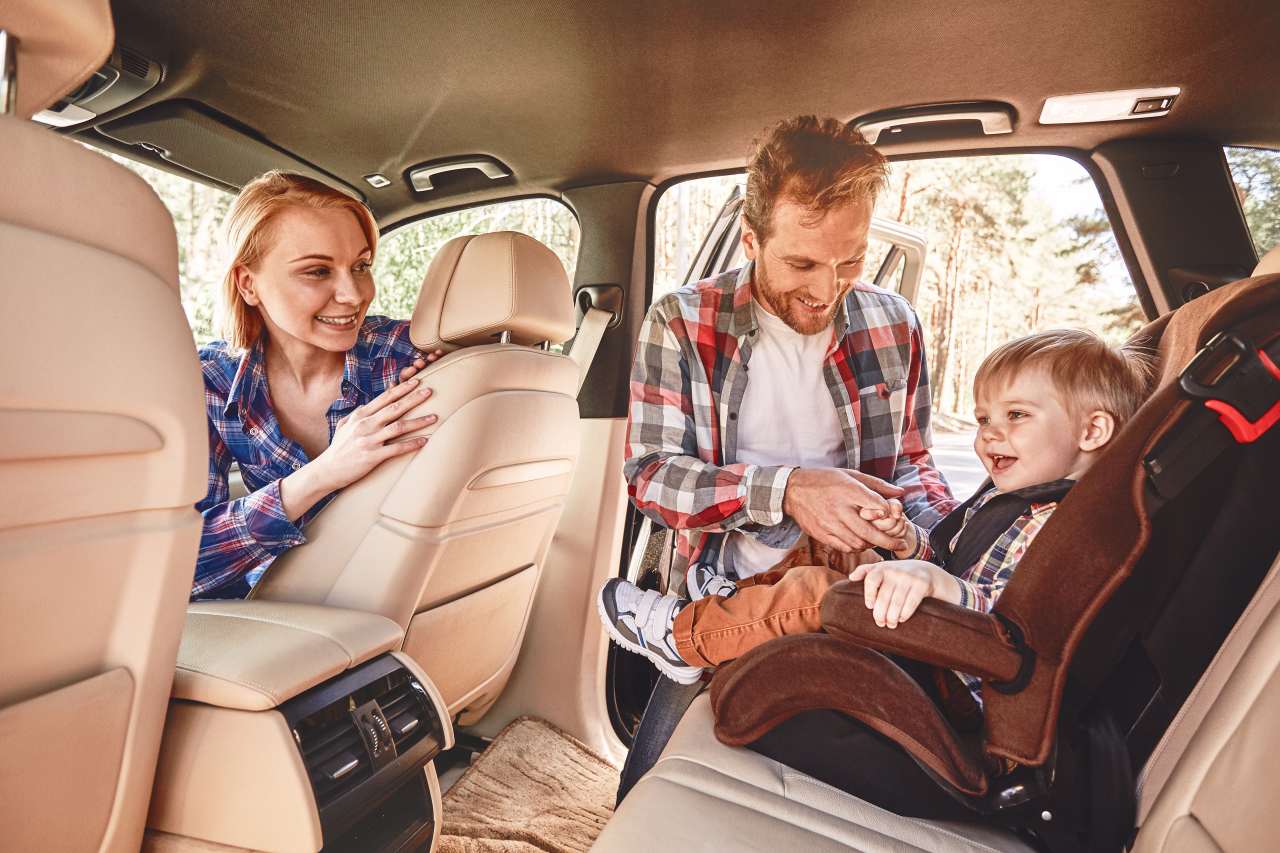

.jpg)
.jpg)
.jpg)
.jpg)
.jpg)
.jpg)
.jpg)
.jpg)
.jpg)
.jpg)
.jpg)
.jpg)
.jpg)
.jpg)
.jpg)





















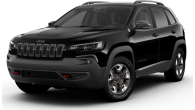
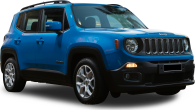




















 copy.png)

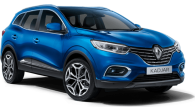




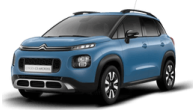








_3.webp)






.jpg)
.jpg)

Comments